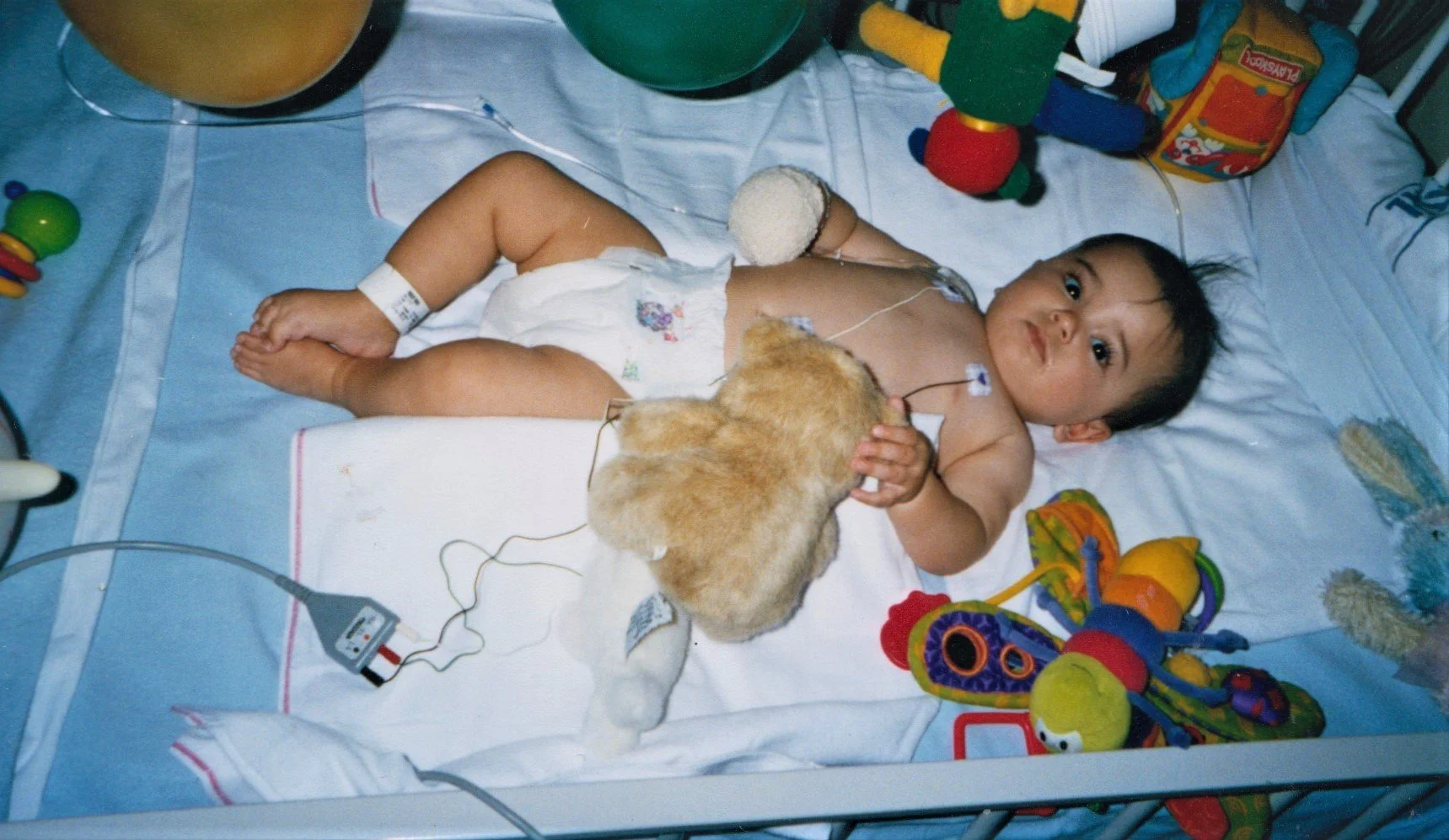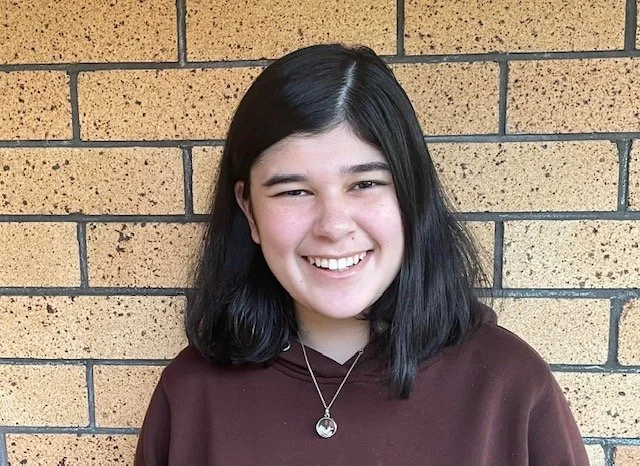'Alisi's Story
‘Alisi’s Story
2021 high-school leaver ‘Alisi Naufahu was only four days old when she was diagnosed with listeria meningitis. She now only recalls the smells and tastes of her numerous hospital trips through her childhood as she lives with the repercussions of the disease.
She shares her gratitude for having lived a mostly normal life, despite ongoing health complications.
“When I was first diagnosed, it was one of the first cases of listeria meningitis that Waikato Hospital had seen in 20 years,” says the 19-year-old. “I don’t remember much of what happened to me.
“After being at home for only a few days, I was in hospital for the first six weeks of my life. The notes from the doctors and my Mum say I had several small seizures in my first few days after birth. It was especially rare for the hospital to diagnose a new-born with listeria meningitis, and previous cases had been in older children and adults.
“I perceive my experience as a ‘one in a million’ chance at life. I could easily have needed medical assistance for my entire life. But, with lots of help from different doctors, nurses, surgeons, and medical centres over the years, I can live life to the fullest now.
‘Alisi, who is currently on a gap year and volunteering at her local Salvation Army store, underwent several medical procedures through her early years, involving shunting, a medical device that relieves pressure on the brain caused by fluid build-up.
Ventriculoperitoneal shunting, or VP shunting is a surgical procedure mostly used to treat hydrocephalus, which occurs when excess cerebrospinal fluid (CSF) collects in the brain’s ventricles. Hydrocephalus can occur in children and infants as a result of a central nervous system infection, and in ‘Alisi’s case the infection was meningitis.
“The shunts that I was fitted with differed over time in terms of what treatment I required,” says ‘Alisi.
“In August of 2003, six weeks after I was born, the doctors and nurses said I was healthy, and I was allowed to go home. But then they found a blockage in my ventricles during my three-month check-up I was diagnosed with hydrocephalus and I needed a ventricular shunt to combat the blockage.”
This was the first of many hospital visits of this kind, and ‘Alisi was in and out of hospital throughout her early years. She even took her first steps in a hospital corridor, back once again to have another shunt fitted. With help from her mum’s 1B5 notebooks of notes, ‘Alisi recalls a childhood filled with hospital visits:
“In January of 2004, I was readmitted to hospital after my Mum noticed that I had become quite restless and lethargic. I was quickly rushed into surgery where it was discovered that the shunt had blocked and had gone unnoticed for a while. However, this time they only needed to make an incision into my chest to help combat the issue.
“Just a few months later in April, I had a temperature and a sore throat and went to the doctor where I was prescribed antibiotics because of my shunt. The doctor couldn’t find any obvious reason for my fever. They sent me to A&E for more tests, until a doctor tapped my shunt and found an infection – they were concerned the meningitis had returned.
“I needed to return to the theatre to have a central line put in so I could have antibiotics administered. I spent three weeks in the hospital, but the shunt didn’t seem to be working.
“They didn’t have any choice but to give me a temporary external shunt, which drains fluid from the brain out of the body. I spent another week in the hospital, lying on my back.
“Then I needed to have surgery again the next year, as my shunt blocked once again. This was quite a simple surgery as the pathways were already there. A revision surgery was recommended to avoid a blocked shunt and have a longer lasting solution.
“Not even a month after the last visit, I was back in hospital with more shunt issues. This resulted in another three-week hospital visit, with splints on my arms to stop me pulling out the huge line they put in.
“My ‘final’ hospital visit was February of 2006. I was almost two and a half. Some dark bruises appeared on my arm and leg. Similar to the meningitis rash on the Plunket Book. Over two days the bruises became darker, almost black which caused concerns that I would need to be seen by a plastic surgeon.
“To this day the doctors are unsure as to what had occurred at the time as the rash began to heal on its own, and thankfully I didn’t need further treatment for that, but it did turn out that my shunt was infected.
“I was implanted with my final shunt, a VO shunt, in early 2006 and this is the one that I have to this day. This is a line that begins inside my head, has a chamber at the back of my right ear and leads to a fat-free pocket in my stomach. Since then, I have not needed to be readmitted, with the exception of an overnight stay after a seizure when I was four”.
Life in and out of hospital took its toll on ‘Alisi’s body through her first years. Fatigue has been one of the major side effects of contracting meningitis at such a young age, something ‘Alisi combated through physiotherapy when younger, and more recently plenty of exercise.
“In my formative years, I found that physiotherapy was key in assisting with controlling and minimising my fatigue,” she says. “Routines and exercises would differ depending on the stage of life that I was in.
“When I was in school, I was constantly needing to explain why I walked a little differently to other kids my age, or why I would get so tired and need to take a break during PE. As I got into my teens, the exercises focused mainly on ensuring that I could get on with everyday life without suffering from fatigue or injury. Building up strength so that when I left physiotherapy I could manage my fatigue.
“Currently, as of 2022, and 19 years old, I no longer need physiotherapy. I keep up with daily exercises to keep my legs strong. But I do think that the physiotherapy was essential to the stamina that I can maintain to this day. The only tell-tale sign I had meningitis is the scar on my stomach and the fact that the back of my head is flat. Which you cannot see as I (thankfully) have quite thick hair”.
‘Alisi is now eager to spread awareness of the aftermath of meningitis.
“A lot of people focus on a person who is currently experiencing meningitis, but not many people talk about how to handle the aftermath and life after being in hospital”.
“I’ve seen and read so many stories about what happens during their time in hospital, discovering and being diagnosed with meningitis, but I don’t see much about the years after meningitis. People don’t realise there are long-term impacts.
“If you saw me in person, you wouldn’t know that I have weakness down the right side, or that I get fatigued very quickly, or that I have short term memory problems. I have to write down notes on my phone, so I can remember as much as possible.
“I want to make people aware of the different types of meningitis. Not everyone’s outcome is the same. I understand that I’m incredibly lucky to live a somewhat normal life, however, it hasn’t always been easy”.
“Meningitis has really affected my outlook on life and I want to be able to share my experiences with others – to give people some understanding. Especially so that people can look out for the warning signs of meningitis that may not be so obvious at first.
“There are people who have lived a normal life afterwards and it is possible to come out the other side even stronger than before.”



